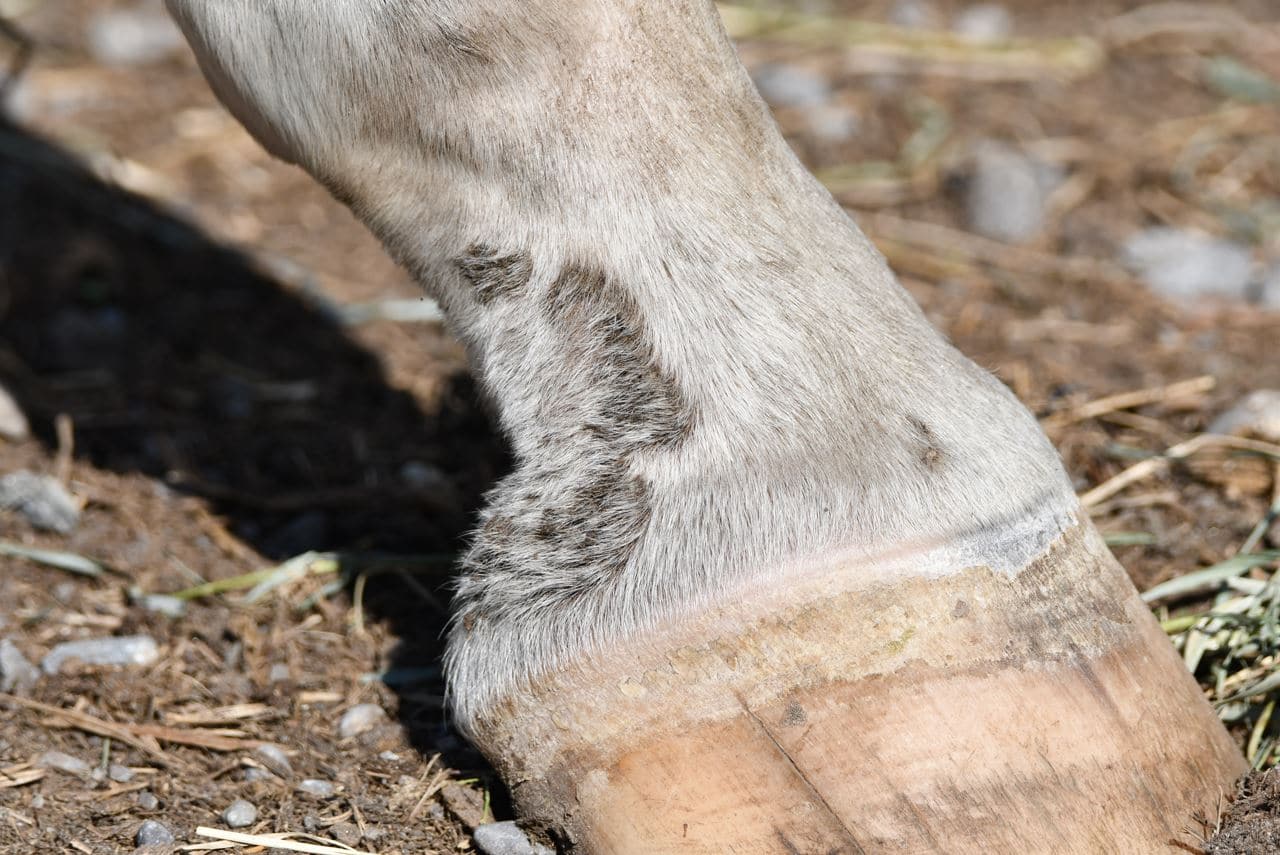What is horse mud mange and what are the symptoms?

Mud mange is a bacterial infection that occurs when the ground is wet. It affects horses living in pasture during rainy periods. Mud scab of the horse manifests itself as oozing scabs. They appear most frequently on the limbs of the horse at the level of the pastern, but also (less often) on the back line, the croup, and the withers. The limbs and folds of the pastern may also be swollen, and this can lead to lameness. The infection is transmitted through infected soil, but rarely between infected individuals. Horses with pink (more fragile) skin are often more susceptible to mud mange.
However, the symptoms of mud mange are sometimes like other skin conditions such as ringworm, scabies (these are parasitic mites and not bacteria as with mud mange), chronic draft horse dermatitis or lice. These conditions can occur in any weather or environment. If in doubt, do not hesitate to ask your veterinarian for advice.
How to treat mud mange in horses?
Keep your horse dry
The first reflex to adopt for the treatment of mud mange is to keep your horse dry. This is especially important if your horse lives in a humid environment. If you have the possibility, you should be able to shelter your horse in a box during the treatment. This has the advantage of treating your horse more easily and quickly. You will also prevent the soil from being contaminated with the mud mange bacteria. This will prevent contamination of other horses on the same grounds.
Treating Mud Scabies in Horses
To treat mud mange, we advise you to shear the infected limbs to prevent the pasterns from becoming too wet. Then clean thoroughly with an antiseptic soap, such as Betadine Scrub, Chlorhexidine or even Marseille soap (just as effective!). Remove the scabs from the limbs if they fall off by themselves. But don’t rip off the scabs, otherwise you risk causing over-inflammation of the limbs.
Then rinse the infected area thoroughly and dry it as much as possible with clean cloths. Finally, apply an antiseptic and healing cream to the wounds. Repeat at least once a day, twice is ideal.
Hydrophobic healing ointments may also be recommended, but they are not always recommended. They sometimes help to maintain the mud scab rather than eliminate it, as they “lock in” the bacteria by protecting them from washing with clean water and soap. If they are greasy, mud and dust can stick to them, especially if your horse continues to live outdoors.
Natural treatments for horse mud mange
There are a few “recipes” for treating horse mud mange naturally. For example, aloe vera can be applied to the disinfected areas. It helps to heal and regrow hair. Olive oil and clay are also effective against cracks. By mixing the 2, you will obtain a smooth paste, which you can apply on the cracks. The olive oil softens the skin, while the clay purifies it by removing bacteria. Coconut oil can also be applied to disinfected areas instead of petroleum jelly, as it insulates the limbs from the mud.
On the advice of a veterinarian, the sick horse can be given antibiotics.
How to prevent mud mange in horses?
Mud scabies occurs on damp ground, so you can choose to stall your horse in the fall or in bad weather to avoid too much exposure to humidity. If your horse lives exclusively in the pasture, you can buy waterproof gaiters. They cover the legs from the hoof to the knees to keep them dry. You can also maintain your pasture to prevent muddy areas from forming, especially around the racks or watering holes. Rubber pads can be easily installed if the ground does not clear up on its own.
Also, you can give your horse supplements that are effective against seasonal skin problems. It is also essential to balance your horse’s diet to strengthen his immune system. Omega 3 and 6 fatty acids strengthen the horse’s skin’s resistance to bacteria. Amino acids, zinc and vitamin B promote the production of keratin, which will protect the horse’s skin from moisture.



